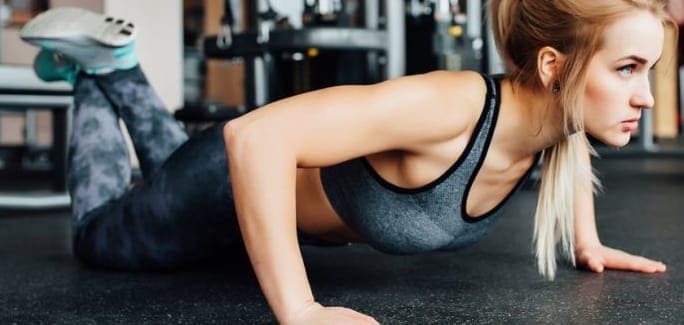Low back pain (LBP) is the most frequent health complaint among mostly healthy adults. The reasons to blame are excessive use of behind the counter painkillers and very possibly – work absenteeism. Poor posture on the daily basis and straight up injury are the main causes why low back pain is included into our everyday motion. Sitting and workout habits can be corrected though.
These are the five straightforward exercises that will help you battle low back pain syndrome and strive to a better lumbar health.
Exercise 1. Decumbent hip lifting: lying down, torso and face upward, bend your knees, position your feet flat on the floor hip-width apart from each other. Put your hands beside your hips with their palms facing down. Breath in and lift your hips up from the surface when you exhale. Try to direct your pelvis upward, so your body formed a straight line. Stop for a moment in that new position. Gradually get back into your initial position. Repeat 9 more times and build your stamina up to 25 once you feel strong enough to do so.
Exercise 2. Plank: lie facing down, let your elbows be right under your shoulders. Connect your hands to form a triangle shape with lower arms. Bend the knees and stand up on your toes. Compress your abs and push your body upward. Try to lift your body weight on your elbows and toes only. Alight your neck and spine, attempt to shape a straight line with your body. Hold up in this position for at least fifteen seconds then gradually lower your whole body to the initial pose. Increase the still time each time you practice till you reach sixty seconds. A variation of the same exercise suggests a less challenging pose – supporting the body weight on your feet instead of the toes.
Exercise 3. Side Plank: Put your elbow on the right of your body right under your shoulder as you are lying down on your right. Position your left hand on the floor right in front of you. Put your feet together – one on top of the other. Breathe in and push your body upwards. Try to compress your abdominal muscles. Form a straight line with your body that reaches from your shoulder down to the ankle. Stand still for fifteen seconds, breathe, return gradually to your initial position. Repeat the same exercise on the other side of your body. Try to reach the hold period to sixty seconds over time. A less challenging twist to the same exercise: do the same kind of plank, but choose knees as the second standing point.
Exercise 4. Superman: Lie facing downwards, rest your head on the surface. Make sure your feet face down as does the forehead. Breathe in and lift your limbs upward at the same time. Try to bend your back slightly as well. Get back to the initial pose. Repeat the same exercise up to twelve times. A less challenging mode of the same exercise would be lifting the right arm together with the left leg and repeat the same for the other side of the body.
Exercise 5. Stability ball pike: Use a gym ball that is well inflated. Stand on your knees. Setting your chest on the ball roll gradually forward. Walk your hands on the floor. Proceed until the ball ends up under your pelvic area. Put your palms beneath your shoulders, breathe in. Try to push your belly button towards your spine. Pull off your pelvis and push it upwards. Let the gym ball roll underneath. Breathe in and come back to your initial pose. Shift the exercise mode to a less challenging version: start the exercise with the ball between the calfs. Repeat the exercise up to twelve times.
Back Pain Therapy specialists at NYDNRehab can help. Using cutting-edge technologies along with advanced treatment methods to diagnose and treat LBP (lower back pain). Whether an acute injury or everyday lifestyle habits prompt your back pain flashes, team of back pain therapists at NYDNRehab is dedicated to getting at the source of your back pain.
Human sacroiliac, or SI joints form a junction between the lumbar and pelvic areas. Although limited in movement, SI joints play a vital role during exercise, absorbing shock from impact forces and prompting upper body focer to vector towards the pelvis and down. The SI joint is supported by a network of ligaments and Read More























































